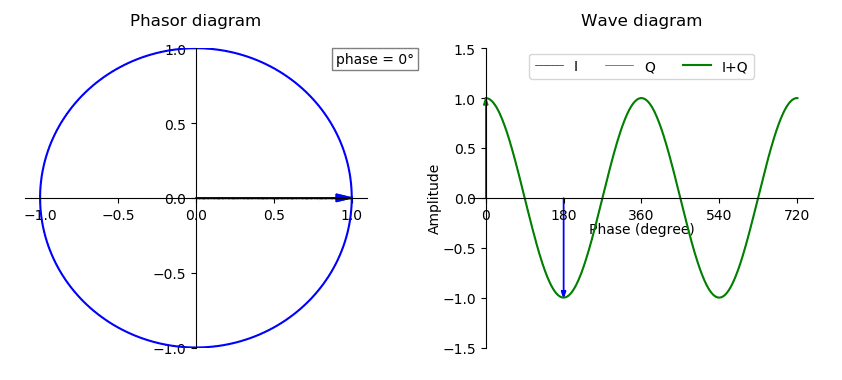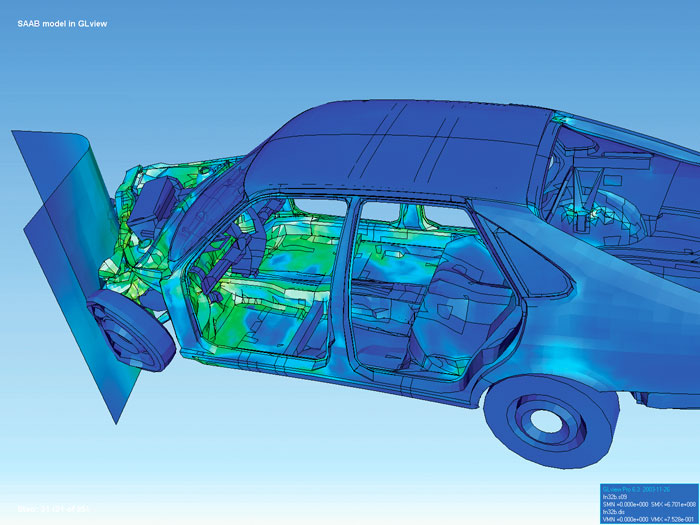|
Electromagnetic Metasurfaces
An electromagnetic metasurface refers to a kind of artificial sheet material with sub-wavelength features. Metasurfaces can be either structured or unstructured with subwavelength-scaled patterns. In electromagnetic theory, metasurfaces modulate the behaviors of electromagnetic waves through specific boundary conditions rather than constitutive parameters (such as refractive index) in three-dimensional (3D) space, which is commonly exploited in natural materials and metamaterials. Metasurfaces may also refer to the two-dimensional counterparts of metamaterials. There are also 2.5D metasurfaces that involve the third dimension as additional degree of freedom for tailoring their functionality. Definitions Metasurfaces have been defined in several ways by researchers. 1, “An alternative approach that has gained increasing attention in recent years deals with one- and two-dimensional (1D and 2D) plasmonic arrays with subwavelength periodicity, also known as metasurfaces. Due to t ... [...More Info...] [...Related Items...] OR: [Wikipedia] [Google] [Baidu] |
Radar Cross-section
Radar cross-section (RCS), denoted σ, also called radar signature, is a measure of how detectable an object is by radar. A larger RCS indicates that an object is more easily detected. An object reflects a limited amount of radar energy back to the source. The factors that influence this include: *the material with which the target is made; *the size of the target relative to the wavelength of the illuminating radar signal; *the absolute size of the target; *the incident angle (angle at which the radar beam hits a particular portion of the target, which depends upon the shape of the target and its orientation to the radar source); *the reflected angle (angle at which the reflected beam leaves the part of the target hit; it depends upon incident angle); *the polarization of the radiation transmitted and received with respect to the orientation of the target. While important in detecting targets, strength of emitter and distance are not factors that affect the calculation o ... [...More Info...] [...Related Items...] OR: [Wikipedia] [Google] [Baidu] |
Jones Matrix
In optics, polarized light can be described using the Jones calculus, invented by R. C. Jones in 1941. Polarized light is represented by a Jones vector, and linear optical elements are represented by ''Jones matrices''. When light crosses an optical element the resulting polarization of the emerging light is found by taking the product of the Jones matrix of the optical element and the Jones vector of the incident light. Note that Jones calculus is only applicable to light that is already fully polarized. Light which is randomly polarized, partially polarized, or incoherent must be treated using Mueller calculus. Jones vector The Jones vector describes the polarization of light in free space or another homogeneous isotropic non-attenuating medium, where the light can be properly described as transverse waves. Suppose that a monochromatic plane wave of light is travelling in the positive ''z''-direction, with angular frequency ''ω'' and wave vector k = (0,0,''k''), where the wa ... [...More Info...] [...Related Items...] OR: [Wikipedia] [Google] [Baidu] |
Ptychography
Ptychography (/t(a)ɪˈkɒgrəfi/ t(a)i-KO-graf-ee) is a computational microscopy method and a major advance of Coherent diffraction imaging, coherent diffractive imaging (CDI), which was first experimentally demonstrated in 1999 using synchrotron X-rays and iterative phase retrieval. It unifies principles from microscopy, microscopy and crystallography, crystallography to reconstruct high-resolution, quantitative images by analyzing a series of overlapping coherent diffraction patterns acquired as a focused beam is scanned across the sample. Its defining characteristic is translational Invariant (physics), invariance, which means that the interference patterns are generated by one constant function (e.g. a field of illumination or an aperture, aperture stop) moving Geometric terms of location, laterally by a known amount with respect to another constant function (the specimen itself or a wave field). The interference patterns occur some distance away from these two components, ... [...More Info...] [...Related Items...] OR: [Wikipedia] [Google] [Baidu] |
Polarization (waves)
, or , is a property of transverse waves which specifies the geometrical orientation of the oscillations. In a transverse wave, the direction of the oscillation is perpendicular to the direction of motion of the wave. One example of a polarized transverse wave is vibrations traveling along a taut string, for example, in a musical instrument like a guitar string. Depending on how the string is plucked, the vibrations can be in a vertical direction, horizontal direction, or at any angle perpendicular to the string. In contrast, in longitudinal waves, such as sound waves in a liquid or gas, the displacement of the particles in the oscillation is always in the direction of propagation, so these waves do not exhibit polarization. Transverse waves that exhibit polarization include electromagnetic waves such as light and radio waves, gravitational waves, and transverse sound waves ( shear waves) in solids. An electromagnetic wave such as light consists of a coupled oscillating el ... [...More Info...] [...Related Items...] OR: [Wikipedia] [Google] [Baidu] |
Phase (waves)
In physics and mathematics, the phase (symbol φ or ϕ) of a wave or other periodic function F of some real variable t (such as time) is an angle-like quantity representing the fraction of the cycle covered up to t. It is expressed in such a scale that it varies by one full turn as the variable t goes through each period (and F(t) goes through each complete cycle). It may be measured in any angular unit such as degrees or radians, thus increasing by 360° or 2\pi as the variable t completes a full period. This convention is especially appropriate for a sinusoidal function, since its value at any argument t then can be expressed as \varphi(t), the sine of the phase, multiplied by some factor (the amplitude of the sinusoid). (The cosine may be used instead of sine, depending on where one considers each period to start.) Usually, whole turns are ignored when expressing the phase; so that \varphi(t) is also a periodic function, with the same period as F, that repeatedly ... [...More Info...] [...Related Items...] OR: [Wikipedia] [Google] [Baidu] |
Rigorous Coupled-wave Analysis
Rigorous coupled-wave analysis (RCWA), also known as Fourier modal method (FMM), is a semi-analytical method in computational electromagnetics that is most typically applied to solve scattering from periodic dielectric structures. It is a Fourier-space method so devices and fields are represented as a sum of spatial harmonics. Description The method is based on Floquet's theorem that the solutions of periodic differential equations can be expanded with Floquet functions (or sometimes referred as a Bloch wave, especially in the solid-state physics community). A device is divided into layers that are each uniform in the z direction. A staircase approximation is needed for curved devices with properties such as dielectric permittivity graded along the z-direction. Electromagnetic modes in each layer are calculated and analytically propagated through the layers. The overall problem is solved by matching boundary conditions at each of the interfaces between the layers using a t ... [...More Info...] [...Related Items...] OR: [Wikipedia] [Google] [Baidu] |
Finite-element Method
Finite element method (FEM) is a popular method for numerically solving differential equations arising in engineering and mathematical modeling. Typical problem areas of interest include the traditional fields of structural analysis, heat transfer, fluid flow, mass transport, and electromagnetic potential. Computers are usually used to perform the calculations required. With high-speed supercomputers, better solutions can be achieved and are often required to solve the largest and most complex problems. FEM is a general numerical method for solving partial differential equations in two- or three-space variables (i.e., some boundary value problems). There are also studies about using FEM to solve high-dimensional problems. To solve a problem, FEM subdivides a large system into smaller, simpler parts called finite elements. This is achieved by a particular space discretization in the space dimensions, which is implemented by the construction of a mesh of the object: the numeri ... [...More Info...] [...Related Items...] OR: [Wikipedia] [Google] [Baidu] |
Finite-difference Time-domain
Finite-difference time-domain (FDTD) or Yee's method (named after the Chinese American applied mathematician Kane S. Yee, born 1934) is a numerical analysis technique used for modeling computational electrodynamics. History Finite difference schemes for time-dependent partial differential equations (PDEs) have been employed for many years in computational fluid dynamics problems, including the idea of using centered finite difference operators on staggered grids in space and time to achieve second-order accuracy. The novelty of Yee's FDTD scheme, presented in his seminal 1966 paper, was to apply centered finite difference operators on staggered grids in space and time for each electric and magnetic vector field component in Maxwell's curl equations. The descriptor "Finite-difference time-domain" and its corresponding "FDTD" acronym were originated by Allen Taflove in 1980. Since about 1990, FDTD techniques have emerged as primary means to computationally model many scientific a ... [...More Info...] [...Related Items...] OR: [Wikipedia] [Google] [Baidu] |
Electromagnetic Wave
In physics, electromagnetic radiation (EMR) is a self-propagating wave of the electromagnetic field that carries momentum and radiant energy through space. It encompasses a broad spectrum, classified by frequency or its inverse, wavelength, ranging from radio waves, microwaves, infrared, visible light, ultraviolet, X-rays, and gamma rays. All forms of EMR travel at the speed of light in a vacuum and exhibit wave–particle duality, behaving both as waves and as discrete particles called photons. Electromagnetic radiation is produced by accelerating charged particles such as from the Sun and other celestial bodies or artificially generated for various applications. Its interaction with matter depends on wavelength, influencing its uses in communication, medicine, industry, and scientific research. Radio waves enable broadcasting and wireless communication, infrared is used in thermal imaging, visible light is essential for vision, and higher-energy radiation, such as X ... [...More Info...] [...Related Items...] OR: [Wikipedia] [Google] [Baidu] |
Polarimeter
A polarimeter is a scientific instrument used to measure optical rotation: the angle of rotation caused by passing linearly polarized light through an Optical activity, optically active substance. Some chemical substances are optically active, and linearly polarized (uni-directional) light will rotate either to the left (counter-clockwise) or right (clockwise) when passed through these substances. The amount by which the light is rotated is known as the ''angle of rotation''. The direction (clockwise or counterclockwise) and magnitude of the rotation reveals information about the sample's Chirality (chemistry), chiral properties such as the relative concentration of enantiomers present in the sample. History Polarization by reflection was discovered in 1808 by Étienne-Louis Malus (1775–1812). Measuring principle The ratio, the purity, and the concentration of two enantiomers can be measured via polarimetry. Enantiomers are characterized by their property to rotate the plan ... [...More Info...] [...Related Items...] OR: [Wikipedia] [Google] [Baidu] |
Meta-waveguide
In photonics, a meta-waveguide is a physical structures that guides electromagnetic waves with engineered functional subwavelength structures. Meta-waveguides are the result of combining the fields of metamaterials and metasurfaces into integrated optics. The design of the subwavelength architecture allows exotic waveguiding phenomena to be explored. Meta-waveguides can be classified by waveguide platforms or by design methods. If classified by underlying waveguide platform, engineered subwavelength structures can be classified in combination with dielectric waveguides, optical fiber An optical fiber, or optical fibre, is a flexible glass or plastic fiber that can transmit light from one end to the other. Such fibers find wide usage in fiber-optic communications, where they permit transmission over longer distances and at ...s, or plasmonic waveguides. If classified by design methods, meta-waveguides can be classified as either using design primarily by physical intuitio ... [...More Info...] [...Related Items...] OR: [Wikipedia] [Google] [Baidu] |






